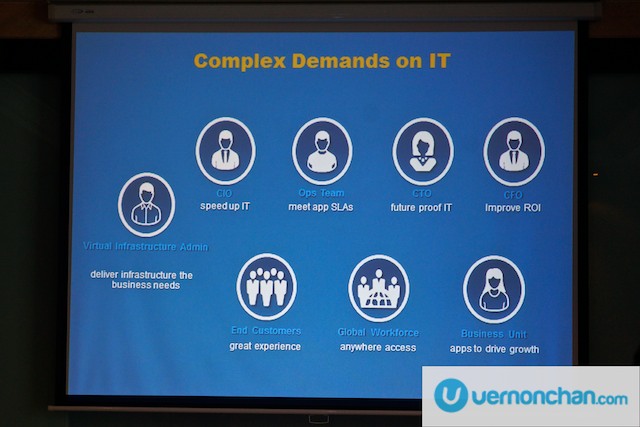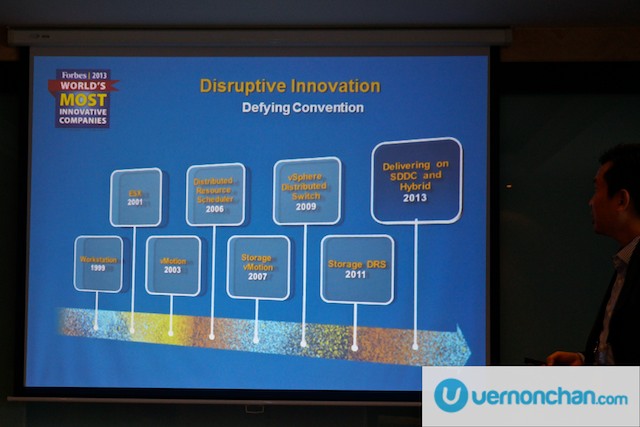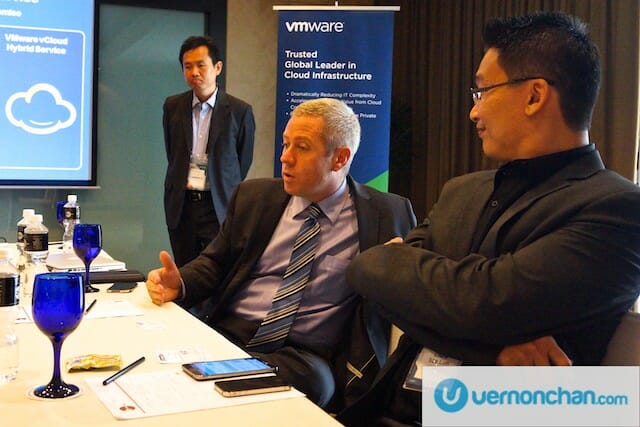
We recently caught up with VMware, the virtualisation and cloud infrastructure experts, to receive product updates from the recent VMworld San Francisco and Barcelona. Members of the media were also given a presentation on the findings of the annual VMware Cloud Index 2013, which provided insights into the current state of IT in Malaysian enterprises.
The VMware Cloud Index 2013 is an initiative commissioned by VMware and conducted by Forrester Consulting. The fourth edition of the annual index surveyed a total of 2,785 senior IT and business decision-makers in 12 Asia Pacific countries, including Malaysia. It is Asia Pacific’s largest cloud computing study.
The media briefing was attended by Jon Robertson, Vice President & General Manager VMware ASEAN; Laurence Si, Country Manager VMware Malaysia; and Sze-Lun Chew, Senior Manager, Systems Engineering VMware ASEAN.


Positive outlook, misaligned IT and business priorities
The general perception of IT amongst C-level executives is positive. IT is considered to be a business or change enabler, where the bottom-line is that if IT does not improve or meet demands of the business, the business will seek alternatives.
As a layman example, and this is likely a common scenario – an executive starts using non-corporate email services like Gmail, online messaging software like Google Hangout or Skype; public cloud storage like DropBox and SkyDrive simply because IT within the organisation isn’t deploying services quick enough or isn’t sufficient to meet the demands of employees and the business. Some employees view this inadequacies as ‘stifling productivity’ and therefore seek alternatives despite knowing that these actions are unauthorised.
This is a term called ‘Shadow IT’ – something that sends shivers down IT or IS departments. It is also known as ‘Stealth IT’, described as external solutions brought into organisations without IT approval. The implications of Shadow IT outweigh mere security risks, as it may also lead to inconsistencies, organisational dysfunction and other inefficiencies.
IT agility equals business agility
This phenomenon clearly demonstrates the importance of IT agility, which is a clear driver of business agility and growth.
The VMware Cloud Index survey revealed that only 14% believe that their current IT investments were sufficient and properly aligned, disappointingly among the lowest in the region.
However, 67% believed that leveraging on cloud and ‘as-a-service’ approaches will help organisations become more efficient.
92% of respondents consider addressing rising expectations of customers and improving customer satisfaction to be their top business priority over the next 12 months. To achieve this, IT as an enabler needs to be in tune with such demands.
Lawrence Si, country manager, VMware Malaysia lamented, “While cloud adoption is increasing in Malaysia, many perceive IT is slow in providing the necessary tools to meet the organisation’s business priorities. It is therefore important that we address the needs of organisations to simplify IT.”
Based on the IDC Server Economies Index 2013, grand total costs saved from virtualisation in Malaysia between 2003 and 2020 is estimated to be US$1.04 billion.
The Solution: Software-defined approach
The study revealed some interesting statistics about cloud adoption in APAC. For Malaysia, over 39% of businesses are currently planning to implement cloud, making Malaysia the second ranking country in APAC to be planning a cloud migration. Meanwhile 31% have already adopted cloud, surprisingly higher than countries like Hong Kong. Over 67% of Malaysian respondents also believe a software-defined approach in implementing and managing datacentre resources will have significant impact on their organisations in the next 2-3 years.
In a nutshell, a software-defined approach will involve virtualisation of datacenter resources and services, resulting in higher levels of efficiency, agility and control.
This is done by expanding virtual compute to all applications, transforming storage by aligning it with app demands, virtualising the network for speed and efficiency; and automation.
A software-defined approach is a solution to meet demands of forces that are changing the landscape of IT today – social networking, mobile, cloud computing and Big Data.

Si added, “With the VMware vCloud Suite 5.1, customers can achieve cloud service provider-level economics, agile application provisioning in minutes to respond to ever-changing business demands, and the right availability, security and compliance for each application with policy-based governance.”
In a recent VMware survey, two-thirds of respondents reported being able to generate new revenue for their businesses by expanding their use of virtualisation. Companies that were able to take full advantage of a complete software-defined datacentre architecture, 85% were able to generate new revenue as high as 22%.
Recent VMware announcements
- NSX, Virtual SAN, vCloud Suite/vSphere with Operations Management
- Horizon Suite and EVC updates
- Acquisition of Desktone, Inc
- vCloud Hybrid Service expansion (coming to Asia soon)












